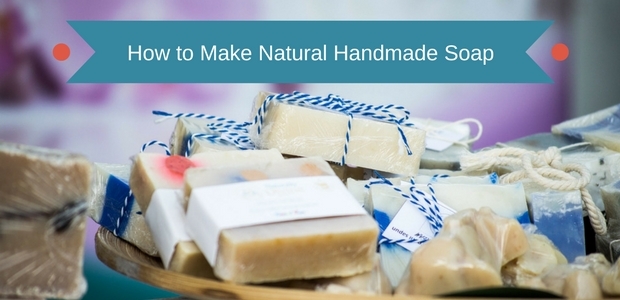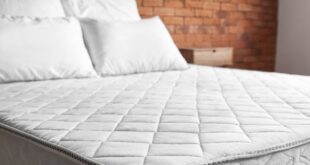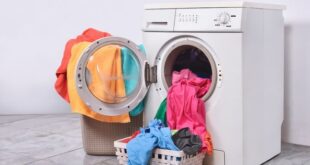Ever since I wrote that review for Delight Bath Essentials I have been wondering exactly how to make natural homemade soap. I am moving away from buying commercially produced products and towards either making my own products or buying from someone that makes it by hand.
How many times have you read an article about something scary that is put into your regular household products? And what about all that animal testing? I cringe just thinking about it. I’m not sure about you, but I would rather have a wrinkly old face with no make up on than wear cosmetics or skincare products tested on animals.
While homemade natural products may be more expensive I truly believe that it is better for me and better for the environment. Plus if you buy from someone that makes natural products you are supporting local businesses too.
Ok so let’s move onto how to make your own soap.
When I first researched online the only way I could find to make your own natural soap was cold process soap and you have to use lye to make it (Sodium Hydroxide). Sodium Hydroxide is a manufactured substance that is used in the manufacture of soap, as well as rayon, explosives, dyestuffs and petroleum products.
All the articles I came across online stated you cannot make soap without lye. So when I went to fetch my kids from play school I popped in to visit Cindy, the owner of Delight Bath Essentials in Langebaan, and she explained to me that there are in fact more ways to make your own soap.
You can make clay soap, african black soap, glycerin soap or cold process soap. Only the cold process soap uses lye directly.
I have to say that the one that really appeals to me the most is the clay soap since I have bought plenty of it myself from her, however I have not been able to find a good recipe.
The African Black Soap is made up of a base oil (palm oil, palm kernel oil, cocoa butter and/ or shea butter), plant ashes (plantain, cocoa pods, palm tree leaves and/ or shea tree bark) and essential oils. It is known to be an amazing natural cleanser with healing benefits.
I think making your own soap would be an awesome thing to try, I’m certainly going to give it a bash soon. I made homemade natural Lavender Bath Bombs a while back and those were lovely. They made lovely gifts for some of the ladies in my family and I can just imagine that homemade soap would also be a winner!
Here’s how to make cold process soap and glycerin soap and hopefully soon I will be able to share some awesome clay soap recipes for you too.
How to Make Cold Process Soap
You cannot make cold press soap without lye. This may sound a little scary because lye is a dangerous chemical that needs to be treated very carefully. However when you add lye (alkaline) to the other essential ingredient of oils (acid) there is a chemical reaction that forms a completely new material which is completely safe and gentle, as well as almost neutral PH.
This process is called saponification.
When working with lye ensure that you follow these guidelines:
- Make sure there are no children or pets around when you work with lye.
- Store your lye in a safe place where children and pets cannot access it.
- Work with gloves and goggles when handling lye and raw soap.
- Work with lye outside or in a well ventilated area.
- Do not breath in the fumes from lye, wear a mask if possible.
- Wear long sleeve clothes and pants to protect you against any possible spills. It will burn your skin if it comes into contact with your skin.
- Always add lye to water. Never add water to lye as it can cause the lye to erupt!
- Do NOT mix lye in copper, tin or aluminium containers – it can cause a hazardous reaction! Plastic is not recommended because it can melt.
- Tempered Glass, Enamel and Stainless Steel Containers are recommended for mixing lye. Adding lye to water that is at room temperature can heat that water to up to 200°F (93°C).
- Mix your lye in a container that is placed in the sink just in case the container breaks or you spill some of the lye.
- Make sure you also wear gloves when cleaning up your containers, equipment and work spaces when you are finished.
- Keep vinegar on hand and when you are finished working wipe your work surfaces with a vinegar soaked cloth to neutralize any lye dust that may be on your work surfaces.
Equipment Needed for Making Cold Press Soap
You probably already have some of these items in your kitchen, but something very important to keep in mind is that once you have used something to make soap you cannot use it again for anything else! So once you have used it for soap it is only to be used as part of your soap making kit in future.
If you are really serious about making soap then I suggest you get a soap making scale that is very accurate to the gram, however for the recipe in this post I am just going to share a basic, easy recipe that won’t require too much equipment.
So here’s what you will need for this homemade soap recipe:
- Newspaper to cover your surfaces
- Quart Canning Jar
- Pint Canning Jar
- Styrene Plastic Spoons or Silicone Spoons
- Measuring Cups
- Measuring Spoons
- Candy Thermometer (must read between 90°F and 200°F)
- Soap Molds or Silicone Molds
- Mixing Bowl of tempered glass, enamel or stainless steel
- Stick Blender or Hand Blender
- Plastic Wrap
- An Old Towel
Ingredients for Basic Homemade Cold Press Soap
- 2/3 cup Coconut Oil
- 2/3 cup Olive Oil
- 2/3 cup Oil such as Avocado, Grapeseed, Sunflower, Safflower Oil – there are so many you can choose from, just do a Google search
- 1/4 cup Lye
- 3/4 cup Water (room temperature, distilled or purified)
It is important to remember that this is a basic recipe and you can add additional ingredients to make any soap you like. There are so many different things to add, you need to play around and see what you like.
Here are some ideas of additional things you can add to this recipe:
Herbs
Any dried herbs can be added to give your soap, Lavender makes a great herb to add but really the sky is the limit to what you can do!
For this recipe you can add 1/4 cup of a dried herbs in.
Essential Oils
Add one teaspoon of any essential oil or fragrance oil to this recipe.
Method for Making Cold Process Soap
1 Prepare to Make Your Cold Process Soap
Cover all your work surfaces with newspaper and put on all your safety clothing and gear before you get started.
2 Mix the Water and Lye
Put your water into the quart canning jar, then start adding the lye little by little while stirring with a plastic spoon. Make sure not to inhale any of the fumes, it would be best to wear a mask.
When all the lye has been added and the water starts to clear you can leave it to stand.
Remember that this mixture could heat up to 200°F so please be very careful!
3 Mix and Heat the Oils
Mix the oils together in the Pint Canning Jar and microwave the oils for a minute. Check the temperature and it should be about 120°F. You may need to heat it some more.
4 Mix the Oils and Lye Mixture
It is vital to get this part right. Both the lye mixture and the oils must be between 95° and 105°F to mix them together. When they are both in the correct temperature range pour the oil mixture first into a mixing bowl, then add the lye mixture slowly.
5 Blend with Hand Blender until it’s at Trace
Use your hand blender until the mixture is what is called “at trace”. Here is a video showing this process and what it meant by “trace”.
6 Add Your Additional Extras
Add your herb and/ or essential oils that will make your soap fragrant and unique. Mix them in thoroughly.
7 Set Your Soap in Molds
Pour your soap into your molds and cover it with plastic wrap. Then wrap it up in an old towel or blanket to keep the heat in. After a day check to see if the soap has fully hardened, if it is still soft or warm leave it for another day. If it is hard and cold take it out of the molds and turn it out onto parchment paper.
If you have used a large mold this is the time to cut it into smaller bars of soap.
8 Allow it to Cure
Your soap needs 4 weeks to cure. Make sure to turn it once a week so all the sides get exposed to air.
9 Wrap Your Soap
When your soap is fully cured it should be wrapped to stop it from attracting dust and moisture from the air.
How to Make Glycerin Soap
Glycerin is a by product of the process of mixing lye and oils. You can buy glycerin and completely skip handling lye which may understandably make you a little nervous. It will certainly make the process of making soap a lot simpler and easier.
Glycerin soap will always have a bit of a transparent look to it.
Ingredients needed for making Glycerin Soap
- Glycerin
- Essential oils
- Rubbing alcohol in a spray bottle
Method for making Glycerin Soap
1 Melt the Glycerin
Melt the amount of glycerin you want to use either in a double boiler or in a microwave. It may be easier to melt it in smaller blocks and add more as you go than melting one huge chunk of glycerin.
2 Add Essential Oils
Add a few drops of essential oils and stir them in thoroughly then remove the glycerin from the heat.
3 Spray Your Molds
Spray your molds with the rubbing alcohol to prevent bubbles forming on your soap.
4 Fill The Molds
Pour your glycerin mix into the molds. Then spray the surface of the glycerin in the molds while it is still hot to prevent bubbles from forming on the top.
5 Allow the Glycerin Soap to Set
It takes just an hour or two for the glycerin to set. When it is completely solid you can just pop them out of the molds. Store your glycerin soap in an airtight container or wrap them.
So there you go! And when I have researched the clay soap and black African soap a bit more I will let you know about those too.
 Kaboutjie SA Mommy Blogs by Lynne Huysamen
Kaboutjie SA Mommy Blogs by Lynne Huysamen





I think this i nice for everyone i think i must try and see if its soap or a dissaster ill ask my mom we must make it together and try she have such sensitive skin.
@lisaanderson yes and let me know how it goes 🙂 I want to get a recipe for clay soap. I am buying some homemade clay soap that has no lye or glycerine in it for my 5 year old daughter as if she has any soap at all she gets infections, if you follow? Anyway until we started using this clay soap (that has Black African soap in it) I could only wash her with plain water. Now she can lather herself up to her hearts content with NO problems. It is amazing.
Apparently proper Black African Soap takes something like 4 years to make and it is helluva expensive which is not surprising taking into account how long it takes to produce it!
It is incredible though, it has amazing healing properties. Try find some for your mom, otherwise if you are ever in Langebaan pop into Delight Bath Essentials in Langebaan and ask Cindy for the clay soap with Black African Soap in it 🙂
Ill see maybe i can find it for her somewhere jip i follow shame im so glad u got that soap for her and it does sound like a really nice little shop u wrote about in artical also…im sure my mom will also be happy if she can use it firstly get then she can use it…hehehe ill be shopping and searchinh around if i make that soap ill tell u how it went…
I am now very keen to get a clay soap recipe! I will try and stop in by that shop again this week. I’m not sure if I will be able to get her to part with her trade secrets though! I can only try.
@lindafourie here is one for soap it will help you for having such sensitive skin. Why not give it a try.
This is something that I have also wanted to try, but have always thought I would not be able to. After reading this I am most certainly going to try it. Maybe a nice lavender or rose scented soap to use when relaxing.